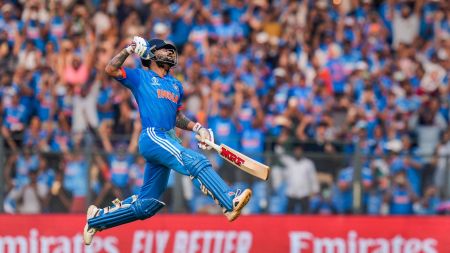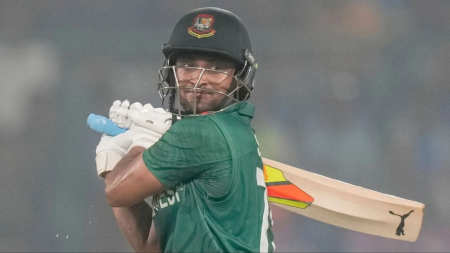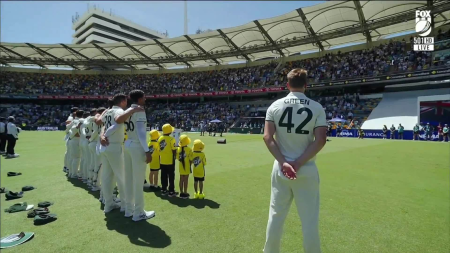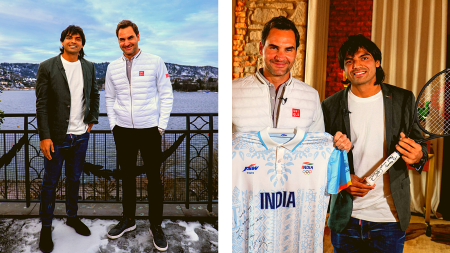Australian Open: Jannick Sinner can match Novak Djokovic in his game, but can he emulate the Serb’s appetite for the big stage?
For Novak Djokovic, hunting a record-extending 25th Grand Slam title, the biggest threat in the main draw of the Australian Open may not have been a rematch of his epic five-set Wimbledon final defeat to 20-year-old Spanish phenomenon Carlos Alcaraz. The highly-anticipated potential semifinal between Djokovic, the greatest tennis player on the big stage, and Jannik Sinner, the 22-year-old World No. 4 from Italy on an unparalleled hot streak, is now a reality, as well as a small headache for the World No. 1.
Friday’s semifinal has the potential to be a seminal moment in Sinner’s career. Not only is he in red-hot form – he has won 18 of his last 19 matches and clinched two ATP titles and the Davis Cup since October – but he has also defeated Djokovic twice in three meetings over 12 days at the back end of last year.

Sinner beat Djokovic in a three-set epic in their group-stage match at the ATP season-ender, but Djokovic got his revenge in the final. When they met in the Davis Cup the week after, Sinner prevailed in extraordinary fashion, saving two match points and making Djokovic unusually buckle under pressure.
Djokovic’s tendency to raise his level in big moments, Sinner’s form, and the pair’s three recent meetings only heighten the anticipation, and give plenty away regarding where this match can be won and lost.
Eyes on the prize 🏆👀#AusOpen • #AO2024 pic.twitter.com/6MYAEmm4Qq
— #AusOpen (@AustralianOpen) January 25, 2024
Backhand mismatch
For so long has Djokovic used his backhand to flatten out opponents and isolate their weaknesses that he has increasingly relied on it as a comfortable rally option, which is not the case when facing the heaviest backhand on the tour.
Rev-for-rev, Sinner’s backhand is not only more powerful than most on tour, but it is an extremely versatile option from the baseline. Among the many improvements that have come in his game after he started working with coach Darren Cahill – including an improved serve and better fitness – baseline strategy has been refined more than anything else. The Italian uses his pure shot-making to push opponents into awkward positions and open up the court to put the ball away. His backhand down the line is the most useful option for winners, but his backhand crosscourt is the most useful rally weapon.
Four superstars. One trophy. Choose your champion 🏆 🤔 pic.twitter.com/qCCUsXmoVz
— #AusOpen (@AustralianOpen) January 24, 2024
Djokovic fell for this in the first of their three meetings in November, allowing Sinner to dictate with his backhand crosscourt, contending but eventually succumbing to the power Sinner’s pure ball striking tends to create. He solved this problem in their next match that he won in the same week, bringing his forehand into play as an attacking strategy, and staying aggressive, not passive, from the baseline.
This match may well be defined by how much Djokovic is able to keep Sinner preoccupied on his forehand side, and how often the Serb goes for the gutsier backhand down-the-line as opposed to bashing it out in long crosscourt rallies.
Seizing key moments
Many aspects of both their playing styles may make this match live up to the hype. Sinner is a pure ball striker, Djokovic can absorb pressure and turn defence into offence. Sinner has an improved serve, Djokovic is an elite returner. Sinner has superior athleticism and footspeed, Djokovic has greater variety.
Serve and volley from the baseline 🤫 @DjokerNole #summeroflove • #DrinkResponsibly • #cheekypoints@wwos • @espn • @eurosport • @wowowtennis pic.twitter.com/5BJMA0G6t8
— #AusOpen (@AustralianOpen) January 24, 2024
Djokovic’s greatest strength is his appetite for the big stage. The Serb has been far from his best in Melbourne so far, so count on him to raise his level for a big match, and even when he is being outplayed, he will once again pull out all the stops to stay alive in a match and drag his opponent to pressure moments and wait for them to blink.
But during his burst of form in the past six months, Sinner has shown composure even under immense pressure. In five matches at the Australian Open so far, he has won 26 of the 28 break points he has faced. In the quarterfinal against Andrey Rublev, he won the second set tiebreaker despite trailing 2-5. Both his recent wins against Djokovic came after he was put under the pump – the first in a deciding set tiebreak, and the second after being double match point down. According to the ‘Under Pressure’ leaderboard, official stats collected by the ATP say Sinner is the second-best player under pressure behind Djokovic, thanks in most part to him having saved 70 percent of break points he has faced.
One game away from a second career Grand Slam semi final – and a first at the #AusOpen.@janniksin leads 6-4 7-6(5) 5-2#AusOpen • #AO2024 pic.twitter.com/oY7vULmPrx
— #AusOpen (@AustralianOpen) January 23, 2024
The Italian seems to find the right shots, the big serves, and the composure when required, all essential for a test like this, against an all-time great opponent deep into a Grand Slam.
Disclaimer: The copyright of this article belongs to the original author. Reposting this article is solely for the purpose of information dissemination and does not constitute any investment advice. If there is any infringement, please contact us immediately. We will make corrections or deletions as necessary. Thank you.





